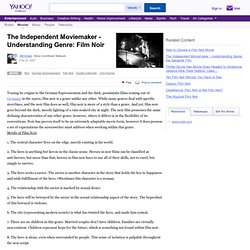

Zombie Movies 101 - Overview of Zombie Movies. A zombie is, in the simplest sense, a living corpse.

In cinematic terms, it differs from a vampire in that it doesn't have the same powers (shapeshifting, fangs) or weaknesses (sunlight, holy water, garlic) and usually lacks much brain function. The term "zombie" was introduced into American public consciousness in 1929 as a Haitian Creole world for a corpse reanimated by voodoo; soon thereafter, it was exploited by the motion picture industry in an array of horror films. The form and function of cinematic zombies has shifted throughout the years, but the presence of the zombie film within the horror genre has remained a steady force since the early '30s. Early Zombies Early movie zombies remained relatively true to the Haitian tradition. 1932's White Zombie, starring Bela Lugosi as a villainous voodoo master in charge of a stable of zombies in Haiti, is an archetype for this early style of film.
By the '50s, filmmakers began to play around with established zombie film standards. The Independent Moviemaker - Understanding Genre: Film Noir. Tracing its origins to the German Expressionism and the dark, pessimistic films coming out of Germany in the 1920s, film noir is a genre unlike any other.

While many genres deal with specific storylines, and the noir film does as well, film noir is more of a style than a genre. And yet, film noir goes beyond the dark, moody lighting of a rain-soaked city at night. The noir film possesses the same defining characteristics of any other genre; however, where it differs is in the flexibility of its conventions. Noir has proven itself to be an extremely adaptable movie form, however it does possess a set of expectations the screenwriter must address when working within this genre.
Motifs of Film Noir 1. 2. 3. 4. 5. 6. 7. 8. Film noir has a gritty, streetwise edge to it, akin to the gangster film, and yet different. Classics of the Noir Genre The America that survived the Great Depression and World War II was a different land than it had been. Modern Versions of Film Noir. 8. Features determining genre - Understanding Film. Horror films are defined as " unsettling films designed to frighten and panic, cause dread and alarm, and to invoke our hidden worst fears, often in a terrifying, shocking finale, while captivating and entertaining us at the same time in a cathartic experience" ( filmsite.org ). Horror films must include a monster (human, alien, mutant, creature, or otherwise), and a collection of directorial, editorial, or cinematographic factors meant to shock and frighten the audience.
In a film like Psycho, such factors include characters, set design, lighting, and music. > In the 1960s, the genre moved towards the "psychological horror" using human as the warning sign of danger rather than supernatural aspects to frighten the audience because it can represent the evil as something real -- the classic horror thriller that transformed horror from unconvicing scenarios and characters to real-world locations.
Characters: -- A villain such as Norman Bates/Mrs. Understanding Media: Understanding Film Genre. IMDb - Movies, TV and Celebrities. Main Film Genres. Genre Sub-Sections Film Genres Overview | Main Film Genres | Film Sub-Genres | Film Sub-Genres Types (and Hybrids) | Other Major Film Categories Best Pictures - Genre Biases | Summary of Top Films by Genre | Top 100 Films by Genre | AFI's Top 10 Film Genres.
